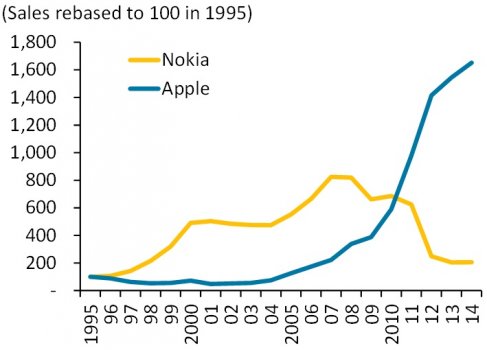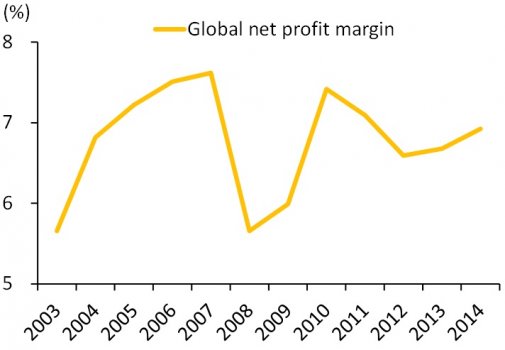Invest in EPS Growth – It Pays
Whether managing a business or investing in one, it is critical to focus on earnings-per-share (EPS) growth. This one measure tells almost the entire story of a business. My analysis of 8,000 companies across the globe shows that their combined EPS has been contracting by 3% per year over the last four years. EPS growth starts with sales growth, which I call “proof of concept” – that is, proof that the market wants your product. Think of Nokia versus Apple 20 years ago compared to how they are today – their roles have reversed. However, sales growth is only half of it. A successful management team also controls costs to earn a strong net profit margin and generate EPS growth. I call consistent EPS growth “proof of competence”. This is proof that management can go beyond product development and sales. Finally, I prefer companies that do not dilute this growth through issuing new shares.
Investors Focus on EPS Growth…and so Should You
EPS growth is one of the top measures that stock market investors reward. This growth originates from one of two factors: Sales growth and/or falling costs. At times, EPS growth can be crushed when a company issues new shares, especially if the new money is invested in projects that have a lower return than the company’s current return.
Global EPS Growth is Very Slow, Contracting 3% Annually Over the Past Four Years
The latest analysis of my 8,000-company research database shows that over the past 12 years, global EPS has grown an average of about 8%. Unfortunately, in the past four years it has averaged negative 3%. This is very slow when compared to the 25% growth the world was experiencing from 2003 until the onset of the global financial crisis in 2007. Let’s review where EPS growth comes from.
 Sales Growth is ‘Proof of Concept’
Sales Growth is ‘Proof of Concept’
As an old adage goes, “if you are not growing, you’re dying”. When a company meets the needs and desires of its customers, it sells more products. When a company innovates with new products and services, customers buy more. If a company moves its products up the value chain, it can often raise prices. So, sales growth can come from increased volume of sales, increased prices, or both. This sales growth is one of the most important measures in business. Like in the start-up world, let’s call it the “proof of concept”. A comparison of the revenue of the once world-leading Nokia and the new world leader, Apple, could not provide a better illustration.
Profit Growth is ‘Proof of Competence’
Of course, sales growth at all costs is not a winning long-term strategy. It is important that a company produces that growth without too much cost. For every $100 in sales, over the past 12 years, the average company in the world spent about $93 on costs, leaving about $7 in profit, or a 7% net profit margin – a strong level of profitability. But, if a company grows its sales faster than its profits, it will eventually face trouble. This happens when management allows costs to get out of control. So if sales growth is “proof of concept”, then you want to think of profit growth as “proof of competence”. Proof that management knows both how to make products and run the business.
The Result of Good Management is Steady EPS Growth
If sales are growing consistently and costs are under control, then a business’ profits are rising steadily. A shareholder’s right to those profits is equal to the percentage of shares that she owns. If a company has 100 million shares in issuance, and an individual owns 1 million shares, then they own a 1% share in those profits. When you manage or invest in a business, always look at EPS, rather than net profit. What you should prefer is that the management of the company grows the business by using internally generated cash, and hence, rarely asks shareholders to put more money into the company.
What are you looking for when you invest? High growth or high profitability? Or both? Any comments or question you might have, I would like to know. Is anything unclear? Or would you just like to add anything to the post? Please let me know in a comment below.
Feel free to share this article with your friends.
DISCLAIMER: This content is for information purposes only. It is not intended to be investment advice. Readers should not consider statements made by the author(s) as formal recommendations and should consult their financial advisor before making any investment decisions. While the information provided is believed to be accurate, it may include errors or inaccuracies. The author(s) cannot be held liable for any actions taken as a result of reading this article.
Originally published on April 24, 2015 at: www.equities.com.



